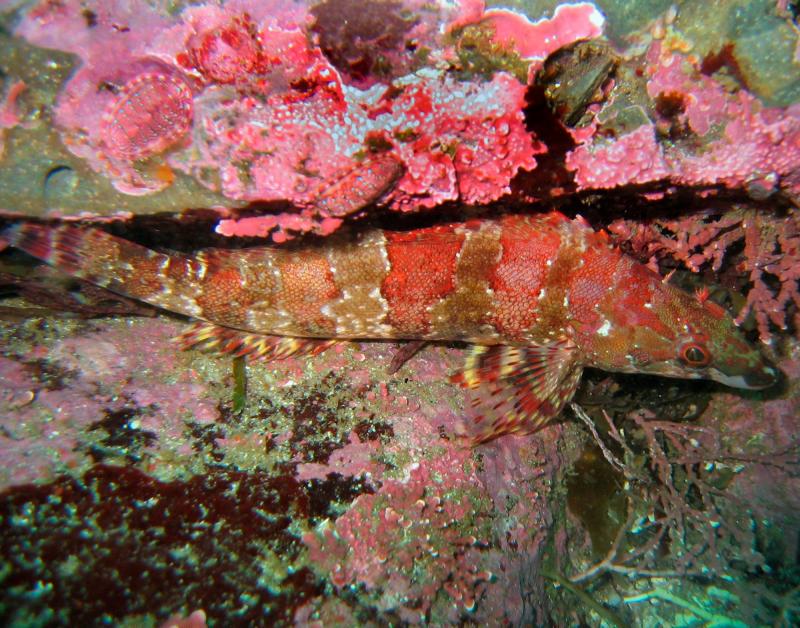Here's another shot from that dive at Point Lobos. This guy is some sort of rock cod (maybe ling cod?) that I ran into at about 30 feet. Continuing with our discussion on interesting camouflage techniques, here's a cool example. Notice that there's a lot of red in this photograph. The coral is red, the fish is red, even those weird little shellfish stuck to the rock are red. A common thought would be that since everything is red, the fish must be camouflaged; however, that's not exactly the case. We tend to think of red as a very obvious, stand-out color; but under water, it's a very different story. If you want to hide under water, red is a very good color to be. Here's why:
Red light dissipates faster than blue light.
Have you ever asked yourself (or, more likely, have you ever had a five-year-old ask you): Why is the sky blue? Why is the ice blue? Why is the ocean blue? Why is the lake blue?
Is air blue? No, air is clear. Is water blue? No, water is clear (see comment). So why does it look blue? When the white light from the sun passes through a clear medium (like air or water) the low-frequency spectrums of light (reds) get absorbed quickly while the high-frequency spectrums of light (blues) get absorbed more slowly. Hence, the blue light is the light that you tend to see. The denser the medium, the shorter the distance required for this to noticeably take effect.
So when sunlight passes through 30 feet of sea water, by the time it hits a red fish, there's very little red light left to reflect. The fish is essentially hidden.
When air is the medium that the light is traveling though, it takes a much much longer distance for this to take effect... miles, not feet. That's why red sports cars get more speeding tickets.
So, there's one more unanswered question: If there's no red light left, why did my photograph turn out red? Easy: I introduced new light via a flash, and since I was only a couple feet from the fish, the red light didn't have a chance to dissipate.


Comments
Correction:
Okay, I'm man enough to admit when I was wrong. I realized this fact when I was reading Sunday's funnies. In the 1/28/07 Get Fuzzy strip, the dog asks his owner why the sky is blue. The owner's answer differs from my own explanation causing me to further research the topic (something I, admittedly, should have done before I posted my speculation).
My description about the water is mostly correct (water is actually just a little blue), in case you're wondering. Not so concerning the air.
In fact...
When the sun's rays are pointed right at you from above, the sunshine looks very white, but the light that's not pointed right at you reflects off the atmosphere and appears blue. This is because the light beams hit gas or dust molecules and scatter the high-wavelength blue light (an effect called Rayleigh scattering). The low-wavelength red and orange light pass right through just fine.
So, when the sun is setting or rising, there is much more atmosphere between you and the sun, more blue light is scattered, more orange and red light passes through, and that's why sunsets are red and orange. If my original description were correct, more atmosphere would mean that sunsets would be a darker blue, which of course is not the case.
The best detailed explanation I found for this fact is on Science Made Simple.
I apologize for the mistake and I promise to do more fact-checking in the future.
Shawn